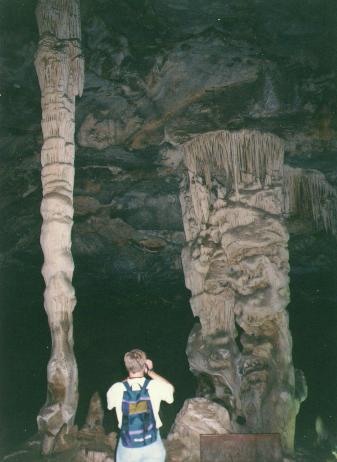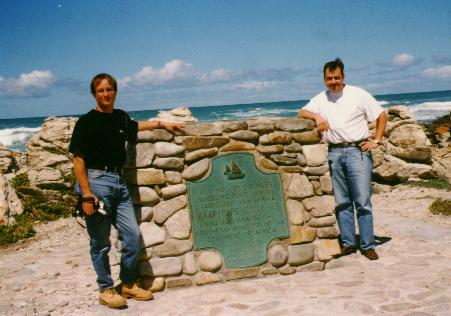
 |
After 3 days in Kruger Park we left it heading south to Durban. Passing Nelspurit and the kingdom of Swaziland we reached Hluhlue Umfolozi National Park by national road N2. This park covers 230km2. At the gate, we asked if it was possible to spend the night at the park. We were lucky and could stay at the Hiltop Camp in the middle of the park for the night. The camp is sourrounded by electric fences to prevent unpleasant encounters with wild animals. During a night safari (starting at 6:30 pm) we were extremely lucky and saw a cheetah (a rare sight!).The following day, we continued on N2 to Durban. The roads are well-built, but you have to pay toll to use national roads. From Durban, we took a short trip to the Draken mountains. At Draken Mountain National Park (12 Rand admission), there are some well preserved bushman's drawings (6 Rand admission). In Durban we gave back our car at the airport (after driving a total of 2996 km) and flew to Port Elizabeth with South African Airlines. We continued with a similar car of different color to the Tsitsikamma National Park. In this park, there are some up to 800 years old trees which are about 37 meters high and have a girth of 9 m! Since the weather at the coast did not match our expectations of South Africa, we left the coast at George, heading north to Oudtshoorn. This is situated much higher and we had brilliant sunshine once more.

There are a lot of ostriches in South Africa. Persons weighing less than 150 pounds can ride on them on ostrich farms. |

Cango CavesThe world's largest stalactite caves. Cleopatra´s Needle is about 9 m tall and is estimated to be about 150 000 years old. |
 |
Cape AgulhasThe southernmost point of Africa is Cape Agulhas (Agulhas meaning pin). The name of the cape is derived from the fact that a compass needle at this point of the earth will point exactly to the north pole without any deviation. |
 |
On South Africa's south coast, the Southern Right Whales (Eubalaena australis) raise their young. Whale hunters gave this name to them because they were easy to catch, which brought them close to extinction. Between 1790 and 1825, about 12.000 Southern Right Whales were killed. Today, the population grows about 7 % every year, which results in a doubling of their number in every 10 years. 1995, about 2000 Southern Right Whales existed. Since 1935 it is forbidden to hunt Southern Right Whales and the population has had a chance to recover. Each of them can be identified uniquely by calcium deposits on its head, the so-called Barnacles. Apart from that, Southern Right Whales can be distinguished from other whales by their typical V-shaped blow caused by their 2 separte blow holes. Their young are about 6 m long at birth. Each day, they grow about 3 cm and drink 600 litres of milk! Grownup Southern Right Whales are up to 15 m long and weigh up to 58 tons. They are able to swim up to 17km/hour fast, dive up to 300 m deep and can live for more than 50 years. The best place to watch whales is at Witsand on the mouth of The Breede River. Ask for "Peter the Whale Man" at the local hotel. |
| Sitemap | back | Top | continue | Deutsch |